As LED technology continues to evolve, LED strip products have transformed from basic lighting solutions into comprehensive platforms that integrate lighting effects, interactivity, and intelligence. When faced with the five main types of LED strips—single-color, CCT, RGB, RGBW, and RGBIC—project decision-makers typically need to make the right choice based on factors such as application scenarios, cost, and installation techniques.
Selecting the appropriate LED light strip is crucial for achieving optimal lighting effects. Whether you require a simple single-color solution or a fully customizable RGBW setup, each type offers distinct color control, brightness, and application flexibility features.
In this guide, we will explore the differences between single-color, CCT, RGB, RGBW, and RGBIC LED light strips, detailing their functions, ideal applications, and technical considerations.
What is a single-color LED strip light?
Single-color LED strip lights are the most basic category in LED lighting, utilizing single-color temperature light-emitting chips. Commonly used color temperatures include 3000K warm yellow light, 4000K neutral light, and 6000K cool white light. These products do not feature color-adjusting functionality.
Its core advantages include high luminous efficacy (up to 180 lm/W), low heat generation, and a long lifespan (approximately 50,000 hours), along with easy installation that does not require a controller. Due to its constant voltage or constant current drive design, it typically supports cutting at intervals of 2.5–5cm and is compatible with standard DC12V/24V power sources.
They are primarily used in lighting applications with high brightness requirements, providing a clean, professional, and uniform appearance when installed in indoor and retail environments. They are commonly used for task lighting in offices and meeting rooms, and their uniform light output also makes them suitable for signage and commercial interior design. Stable lighting enhances visibility and focus.
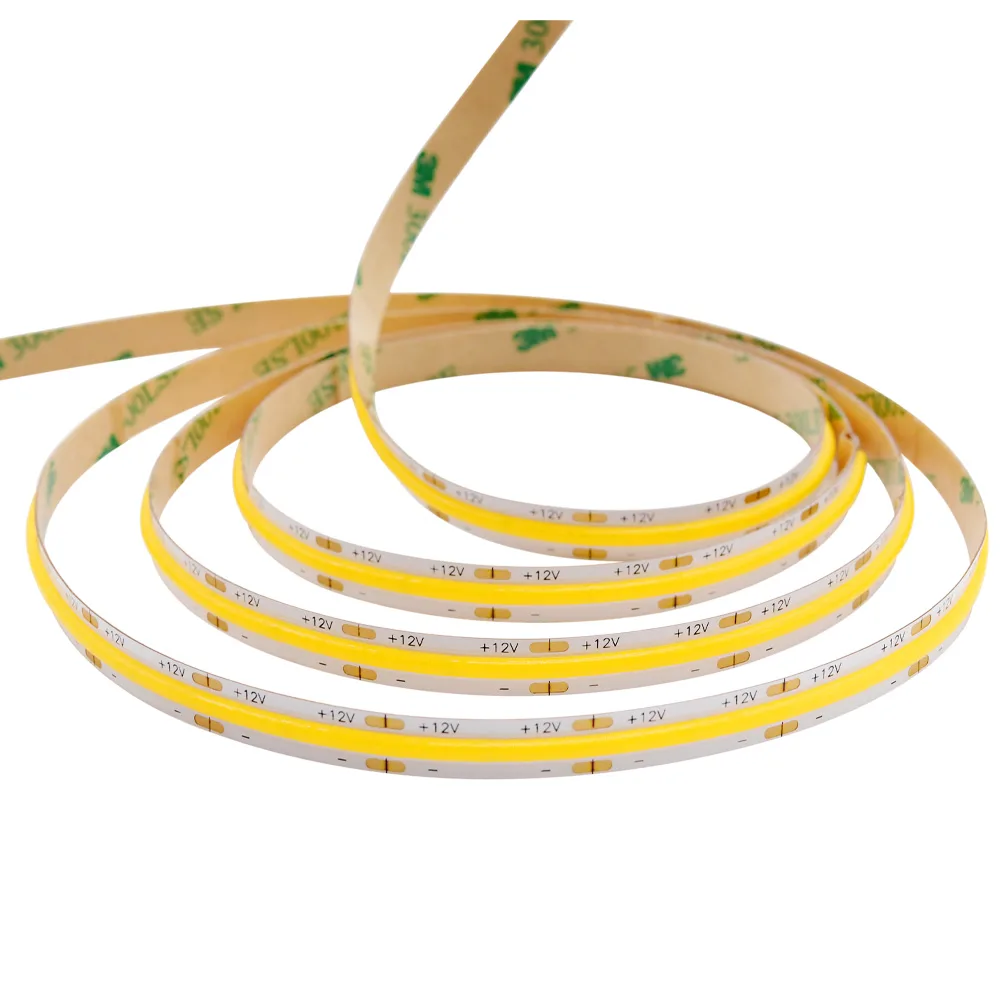
Single Color COB LED Strip Light
Main Model: FYX08T480C
LED Chip QTY per Meter: 320/384/480/528
CRI: >90
PCB Width: 8mm/10mm
Color Temperature: 2700K/3000K/4000K/6500K
Input Voltage: DC12V/DC24V
Power per Meter: 8W/10W/11W/14W
Efficiency: 130-150lm/W
IP Grade: IP20/IP54/IP65/IP67/IP68
Warranty: 3 years
What is a tunable white LED strip light?

A tunable white LED strip light features dual-emitting LED chips with warm white (2700K) and cool white (6500K) light sources arranged on the strip. Through a controller, it enables continuous color temperature adjustment between 2700K, 6500K, and 4000K (a blend of 2700K and 6500K). In other words, you can simultaneously enjoy warm white light, natural white light, and bright light to meet your lighting needs.
The Tunable White LED Strip Light is primarily used in spaces such as bedrooms and office areas where lighting ambiance needs to be adjusted, enabling a seamless transition from a cozy to a focused lighting environment.
This adjustability makes CCT LED strip lights ideal for environments requiring adaptive lighting, such as offices, retail spaces, and hotel environments, where lighting needs to transition between functional task lighting and ambient mood lighting. Whether creating mood lighting, accent lighting, task lighting, or commercial lighting, tunable white LED strip lights are always an excellent choice.
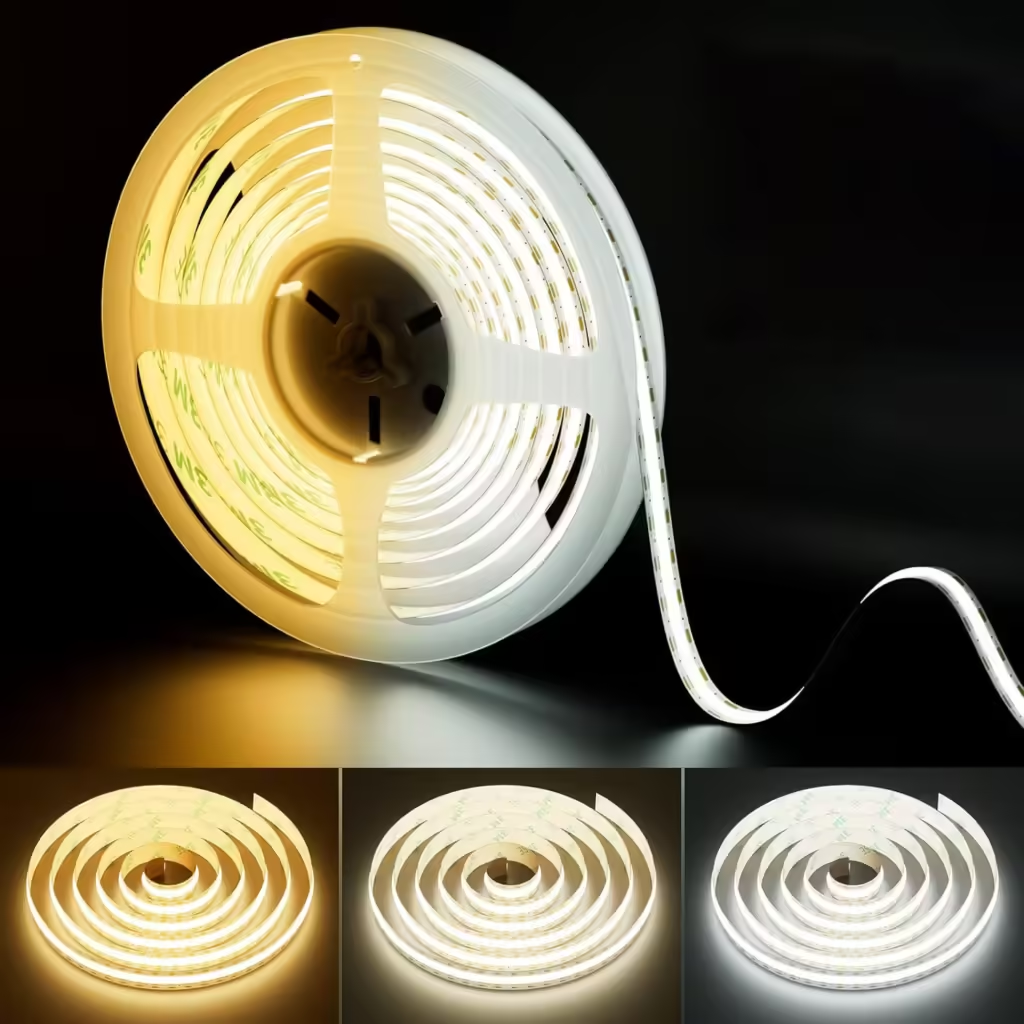
Dual Color Tunable White COB LED Strip Light
Main Model: FYT10T608C
LED Chip QTY per Meter: 608/640
CRI: >90
PCB Width: 10mm
Color Temperature: 2700K – 6500K changeable
Input Voltage: DC12V/DC24V
Power per Meter: 608chips – 14W, 640chips – 16W
Cuttable Length: 608chips – 26.31mm, 640chips – 50mm
IP Grade: IP20/IP54/IP65/IP67/IP68
Warranty: 3 years
What is an RGB LED strip light?
An RGB LED strip light refers to an LED strip where each LED is composed of three chips: red, green, and blue. These chips can emit red, green, or blue monochromatic light individually or be combined to produce white light or other colors. When paired with a controller, they can achieve various color combinations and dynamic effects.
RGB LED strip lights are ideal for creating ambiance or mood lighting, making them suitable for a wide range of commercial and residential spaces, such as retail stores, living rooms, entertainment rooms, bedrooms, and even kitchens.
However, while RGB LED strip lights excel at producing vibrant color effects, they have limitations when it comes to generating true white light. Since white light is created by mixing red, green, and blue, the result often has a slight blue or red tint rather than pure white.
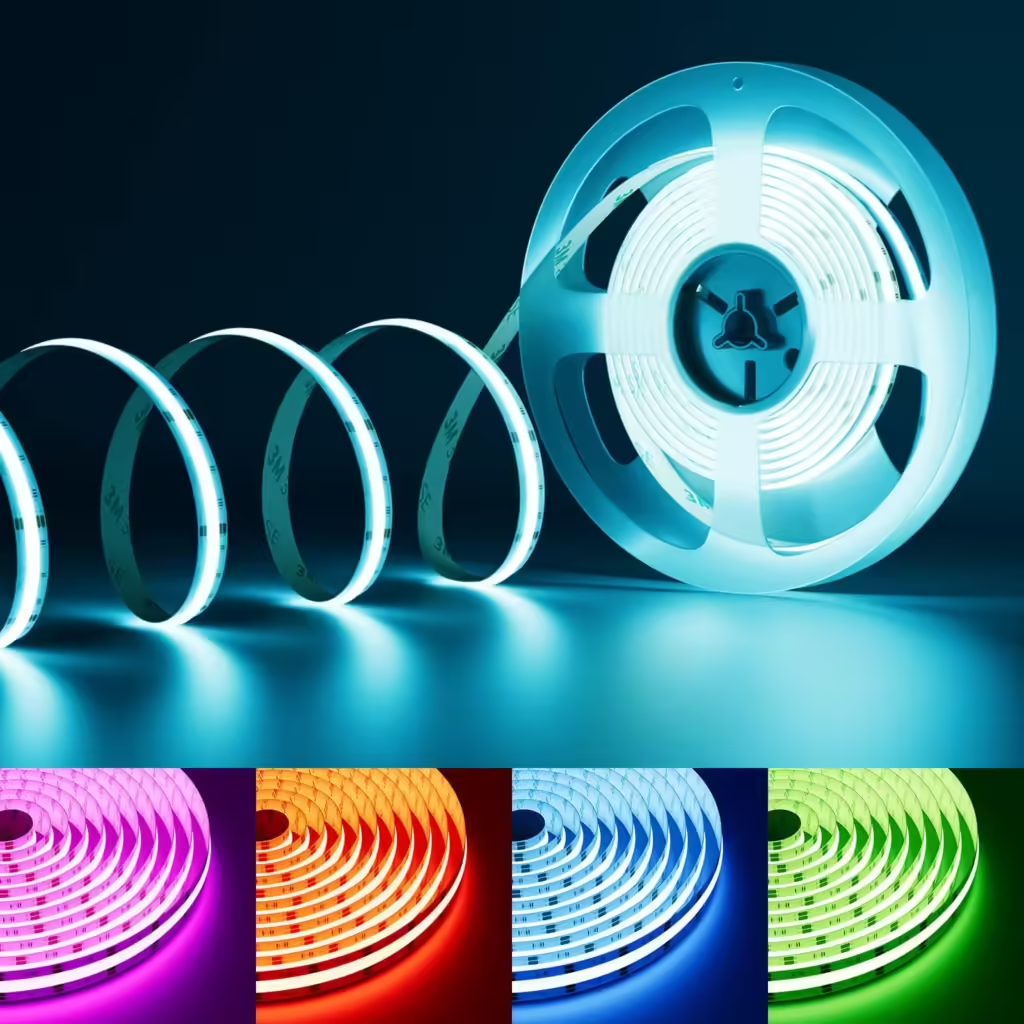
Color Changing COB RGB LED Strip Light
Main Model: FYQ10T576C
LED Chip QTY per Meter: 576/810/840
CRI: N/A
PCB Width: 10mm
Color Temperature: RGB
Input Voltage: DC12V/DC24V
Power per Meter: 14W
Cuttable Length: 576chips-31.25mm/62.5mm, 810chips-33.33mm, 840chips-50mm
Waterproof Version: IP20/IP54/IP65/IP67/IP68
Warranty: 3 years
What is an RGBW LED strip light?
An RGBW four-color LED strip light is an illumination product that builds upon the traditional RGB (red, green, blue) LED strip light by adding an additional white LED chip, thereby forming a four-color pixel system. This design not only retains the RGB’s ability to mix 16.7 million colors but also enables the independent output of high-purity, high-brightness white light.
Since the power consumption of the white light when lit alone is only one-third of that in RGB mode, this configuration significantly enhances overall lighting brightness and optimizes energy efficiency at the same power level. Users can flexibly switch between monochromatic white light, warm light, or dynamic RGB color mixing effects via a controller, achieving seamless transitions from practical lighting to vibrant colors.
RGBW light strips are approximately 25% more expensive than RGB light strips. These strips are ideal for architectural lighting projects, such as hotel facade lighting and retail store applications. They can easily switch from white light to dynamic color effects, making them perfect for attracting attention and enhancing brand visibility.
Since RGBW LED strips do not rely on mixing RGB levels to produce white light, they are ideal for applications requiring balanced, natural, and high-quality lighting.
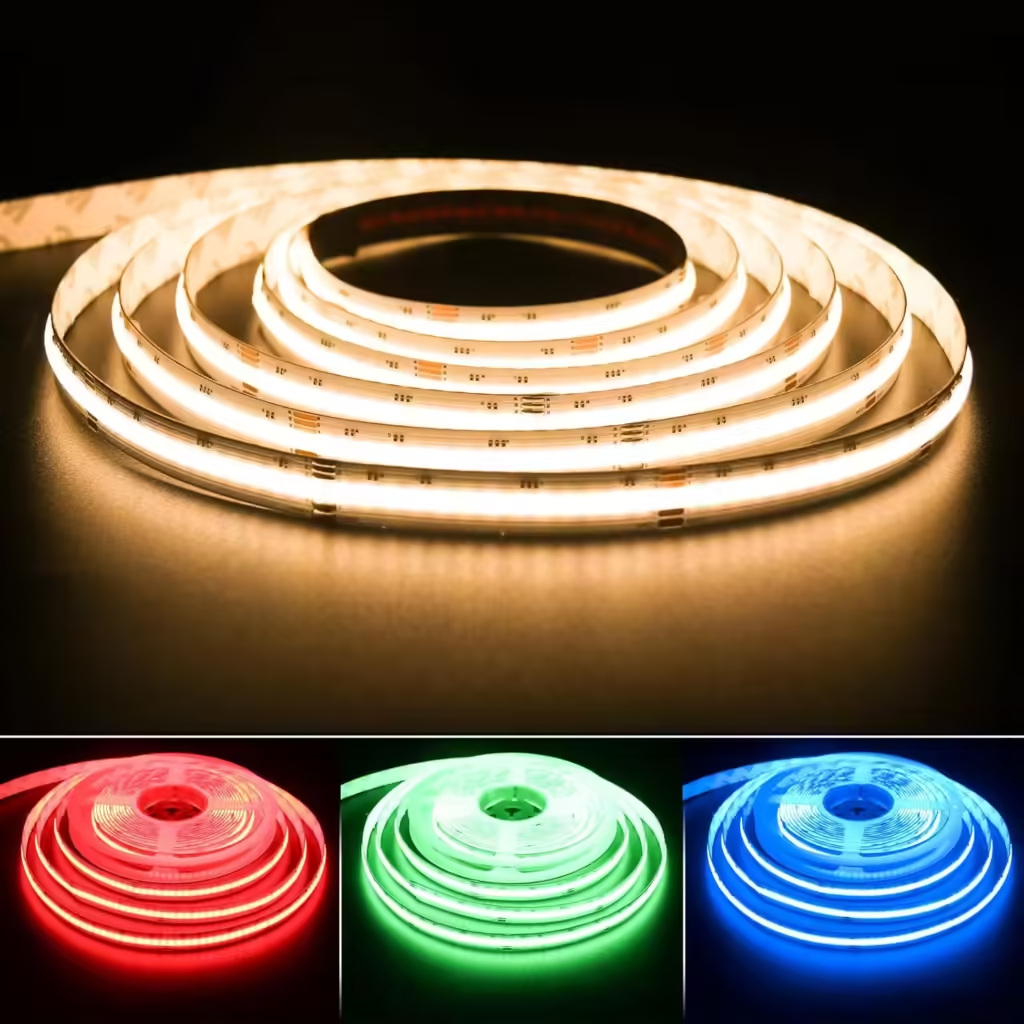
Color Changing RGBW COB LED Strip Light
Main Model: FYH12T784C
LED Chip QTY per Meter: 784
CRI: N/A
PCB Width: 12mm
Color Temperature: RGBW
Input Voltage: DC24V
Power per Meter: 19W
Cuttable Length: 71.42mm
Waterproof Version: IP20/IP54/IP65/IP67/IP68
Warranty: 3 years
What is an RGBIC LED strip light?
RGBIC LED strips are pixel-controlled LED strips, also known as smart LED strips. They are categorized into two types based on the combination structure of the IC and LED chips: built-in and external. In the built-in type, a microcontroller chip (IC) is embedded within each LED chip, with the IC internally controlling the lighting mode of the RGB chips. This configuration saves component space, reduces complex wiring, and shortens engineering design time.
Internal IC pixel light strips support independent addressing: each LED can receive instructions via the internal IC and be individually controlled for color, brightness, or on/off status, enabling “single-LED programming.” They only require a single signal wire to control a long string of LEDs, making wiring simple.

External IC pixel light strips separate the RGB chip from the control chip, using the IC to control the RGB LEDs. The advantage of this method is that the LEDs are separated from the IC, improving heat dissipation. However, it has more external components and a more complex control circuit. As shown in the following schematic diagram:Using an external WS2811 chip with an SPI/DMX512 protocol controller to achieve dynamic effects such as rainbow gradients and flowing light patterns.

RGBIC LED strips are compatible with development boards such as Arduino and Raspberry Pi, enabling programmable responses to music, sensors, or IoT commands. They are an ideal choice for dynamic lighting applications, with external ICs supporting pixel-level complex effects such as text scrolling, image display, and flowing chase effects, rivaling low-resolution screens.
RGBIC LED strip lights are suitable for stages, digital art walls, customized video installations, building media facades, interactive art installations, and other scenarios requiring high-precision dynamic lighting effects. They serve as a key technological platform for smart lighting. Common applications include entertainment venues, stage lighting, holiday decorations, and interactive installations. They can create custom animations, effects, and patterns, making them popular in creative lighting displays such as bars, clubs, or art installations.
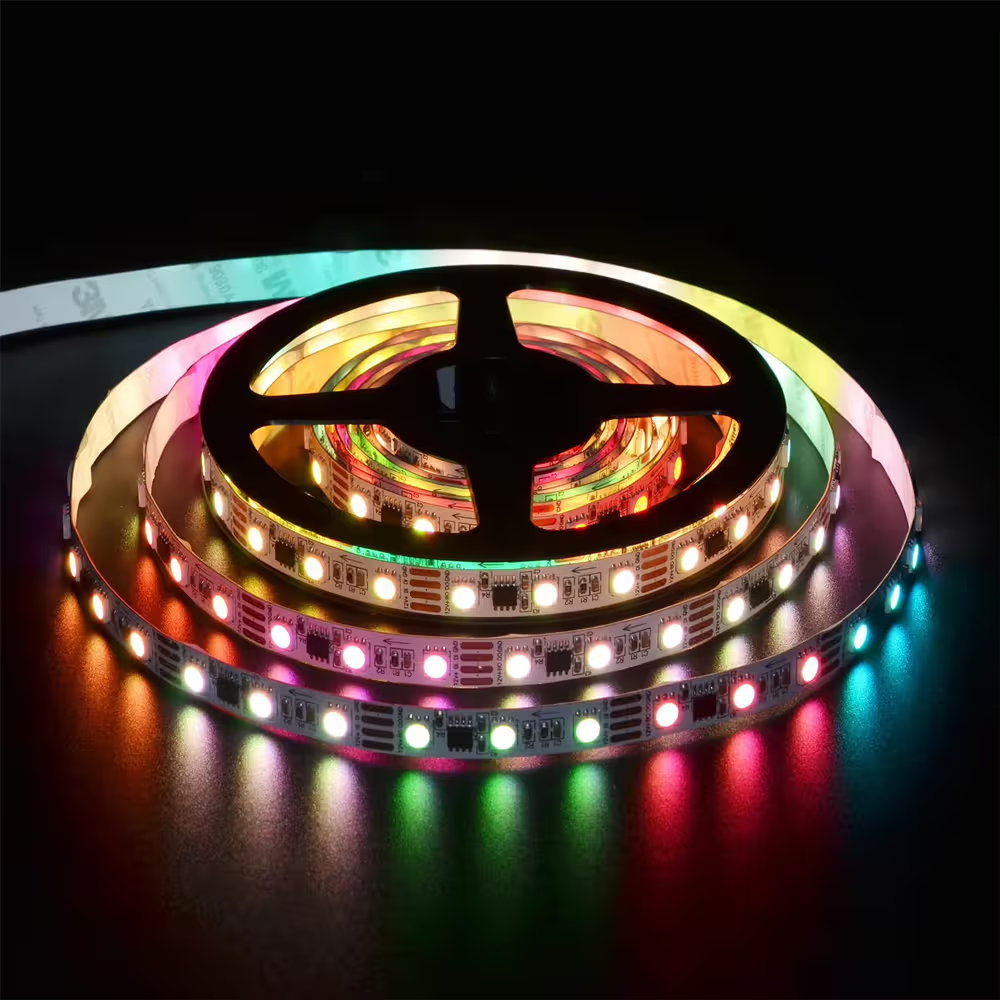
SMD5050 RGBIC LED Strip Lights
Main Model: FAX10T60A
LED Type: SMD5050
LED QTY per Meter: 30/32/60/72/84/96/120/144
PCB Width: 8mm/10mm/12mm/14mm
Color Temperature: 2700K-6500K/RGB/RGBW/RGBCCT
Input Voltage: DC5V/DC12V/DC24V
Power per Meter: 6W/10W/12W/14W/18W/19W/20W/22W
IP Grade: IP20/IP65/IP67/IP68
Warranty: 3 years
Above the function supports customization.
LED Strip Light Application Recommendations
1.Residential Lighting: Recommended use of monochrome LED strips
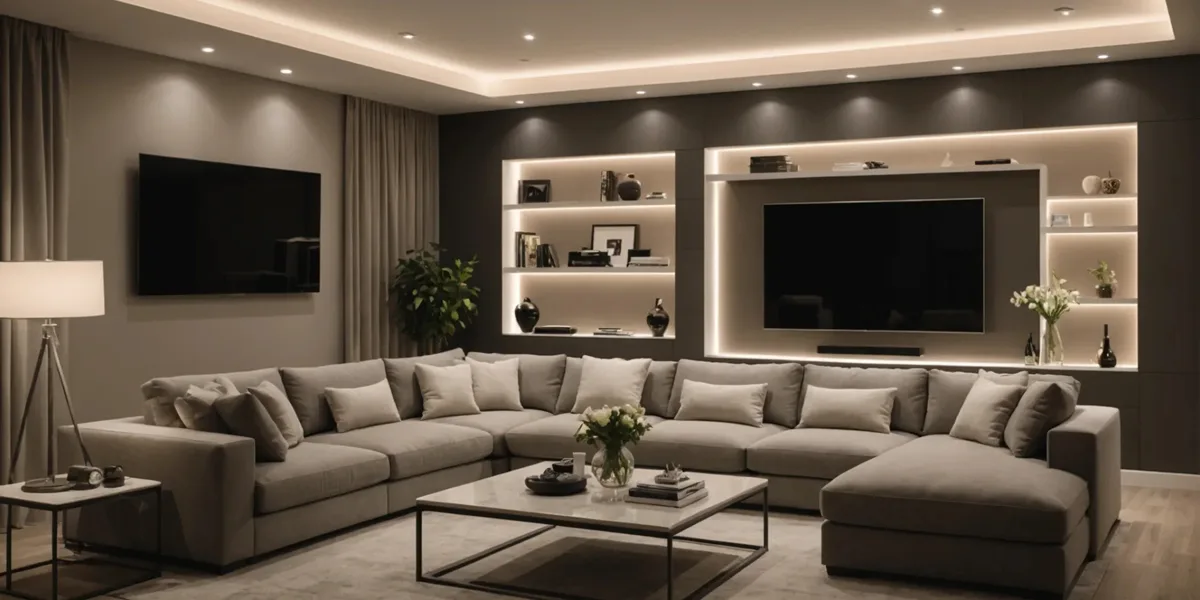
For spaces such as living rooms, bedrooms, corridors, kitchens, bathrooms, and under cabinets, monochrome LED strips offer the following advantages:
- Stable and comfortable lighting: Fixed color temperature, such as 2700K warm yellow light or 4000K neutral light; uniform and soft lighting with high color rendering index, reducing eye strain over extended use, particularly suitable for the elderly and children.
- Simple operation and durability: No complex switching required; a single button press meets basic lighting needs. Simple circuit structure with a 30% lower failure rate than three-color strips. Long LED chip lifespan and low maintenance costs.
- High cost-effectiveness: Prices are 20%-30% lower than three-color light strips, and no additional controllers or smart devices are required, making them ideal for households with limited budgets.
2.Healthy Lighting: We recommend using tunable white LED strips
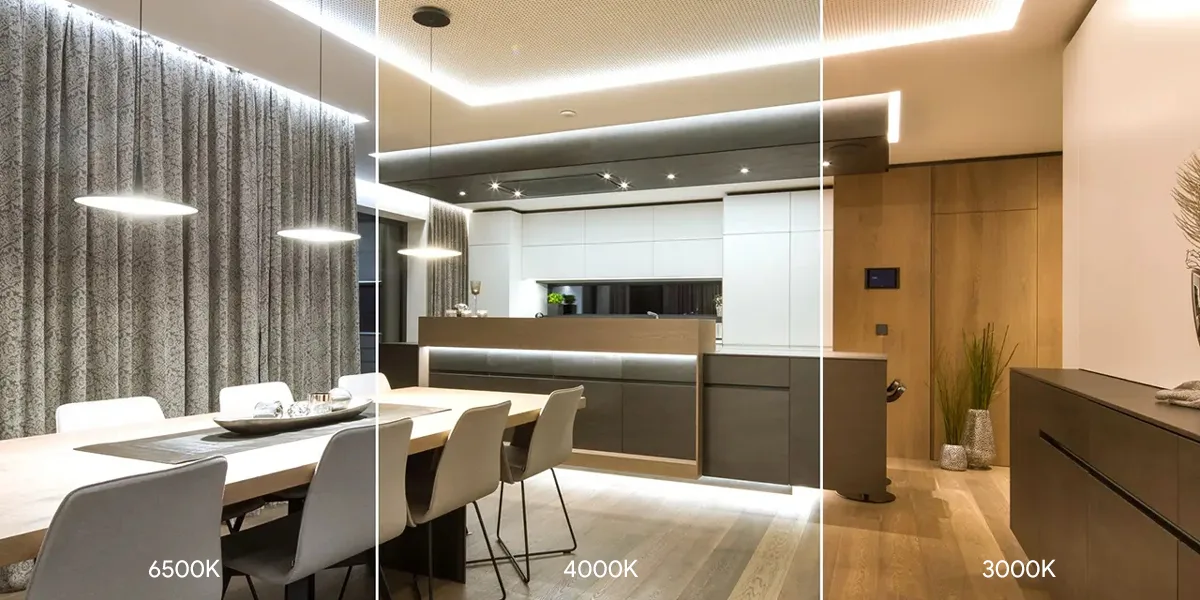
This recommendation is based on their scientific optimization for human circadian rhythms, visual comfort, and environmental adaptability, making them ideal for settings such as restaurants, study rooms, retail spaces, hotels, and dining areas.
- Color temperature adjustment: Dual-color light strips can dynamically switch color temperatures (e.g., 2700K–6500K). Higher color temperatures above 5000K during the day enhance alertness, while lower color temperatures between 2700K and 3000K at night promote melatonin secretion and improve sleep quality.
- Relief from eye strain: High color rendering index (Ra ≥ 90) and low blue light design accurately reproduce object colors and reduce color differences; color temperature switching avoids prolonged exposure to a single light source, making it particularly suitable for student reading or office environments.
- Mood regulation: Switchable warm and cool light modes, such as warm light for a cozy atmosphere in living rooms while watching movies and cool light for enhanced focus in study rooms, to meet the needs of multi-functional spaces.
- Medical-grade health support: Color temperatures between 2700K and 3000K help inhibit excessive eye axis growth and reduce the risk of myopia; color temperatures between 4000K and 5000K are suitable for learning, reducing eye strain.
- Energy-saving and smart dimming: Compared to single-color light strips, the dual-color design covers all scenarios without additional lighting fixtures and can be linked to smart systems for automatic dimming, enhancing usability.
It is recommended to choose professional health lighting products that support flicker-free operation and high color rendering and avoid excessive exposure to high-color-temperature blue light at night.
3. Commercial Entertainment: Recommended use of RGB light strips
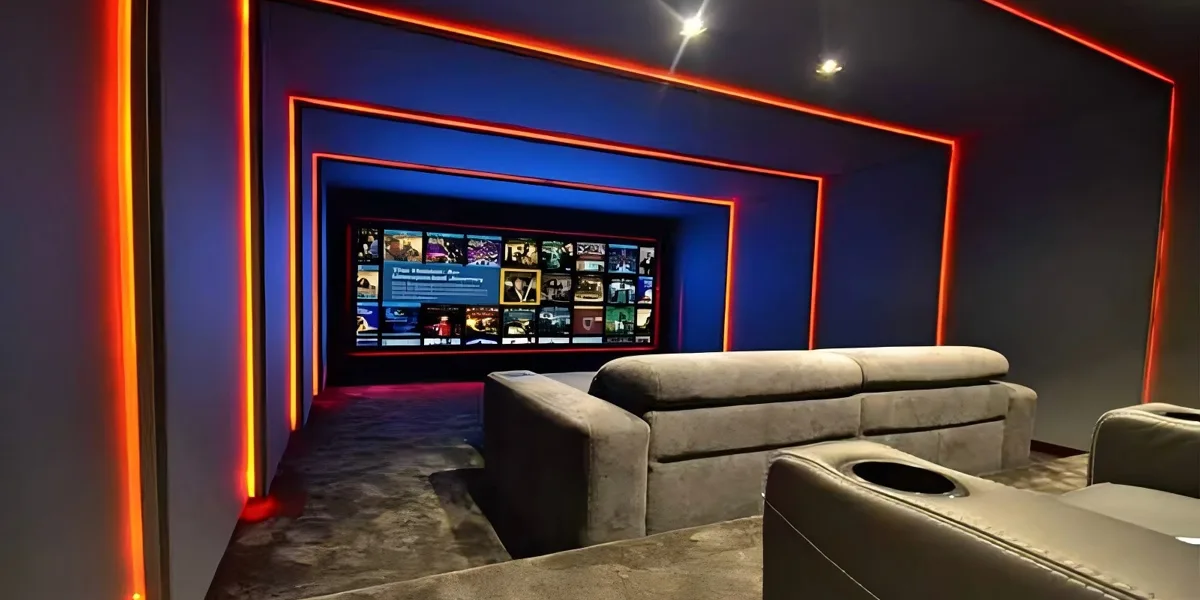
Mainly due to their unique advantages in color, dynamic effects, and scene adaptability, they are suitable for setting mood or emotional lighting. For example, bars, KTVs, TV background walls, display cabinets, and other areas with non-precise lighting requirements.
- Color Diversity: RGB light strips can mix the three primary colors—red, green, and blue—to create 16.7 million color combinations, easily switching between romantic warm light and tech-inspired cool light to meet the personalized needs of different commercial settings. For example, bars can synchronize dynamic colors with music rhythms to enhance immersion, while retail stores can use soft gradient lighting to highlight product quality.
- Dynamic Effects: Supports synchronization with music, video, or smart systems to produce dynamic effects like flowing water or breathing, significantly enhancing spatial vitality. For example, RGB light strips at exhibition hall entrances can automatically switch modes based on foot traffic, creating a visual focal point.
- Flexibility and Low Cost: Light strips are flexible and bendable, suitable for irregular structures (such as counters or ceiling contours), and easy to install.
- Energy Efficiency. Long lifespan: LED light sources have low power consumption and a long lifespan (over 50,000 hours), resulting in lower long-term usage costs compared to traditional lighting fixtures, aligning with energy-saving requirements for commercial spaces.
4.Commercial Ambiance: RGBW light strips are recommended
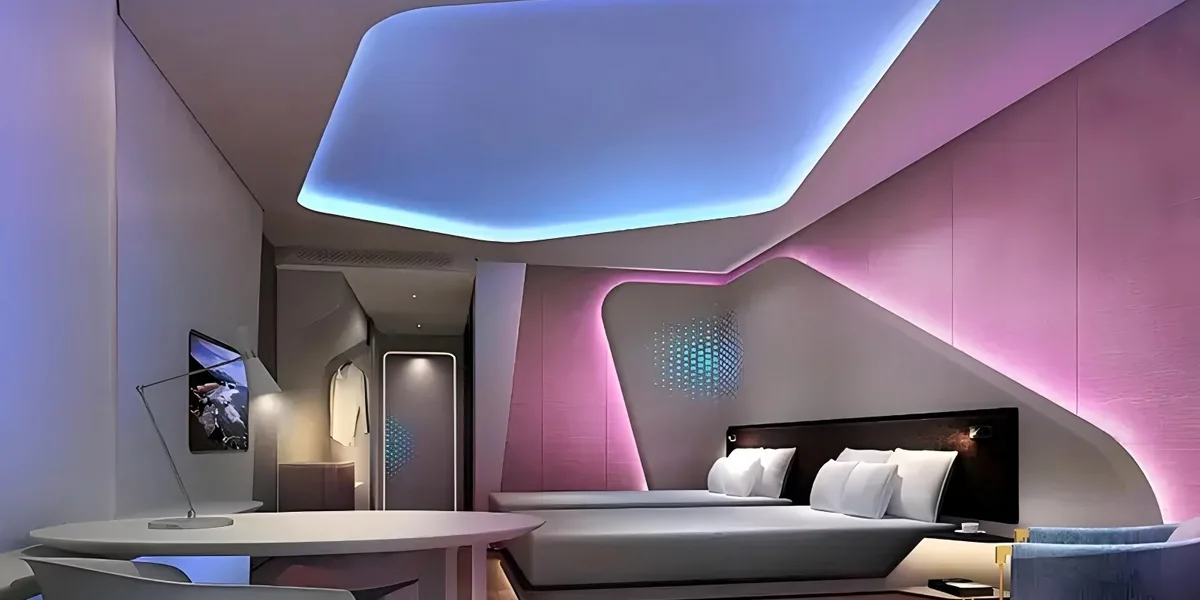
Primarily due to their significant advantages in color performance, environmental adaptability, and intelligent control. For example, storefronts, jewelry counters, and building lighting require high color rendering lighting that balances color performance and brightness requirements.
- Advanced color mixing capability: RGBW light strips combine red (R), green (G), blue (B), and white light (W) to produce soft, natural-looking colors, avoiding the overly vibrant colors of traditional RGB light strips. This makes them ideal for creating an elegant, soft commercial space atmosphere.
- Dynamic effects and scene adaptation: Supports smart control, enabling synchronization with music or apps to achieve gradient, flowing, and other dynamic effects, suitable for scenarios requiring visual focus, such as exhibitions or store windows. For example, in commercial performances, synchronizing light strips with music enhances immersion.
- Flexible lighting mode switching: The independent white light control function (such as 6500K cool light or 3000K warm light) meets basic lighting needs, while the RGB mode quickly switches to ambient lighting, balancing practicality and decorative appeal.
5. Digital Art: We recommend using RGBIC light strips
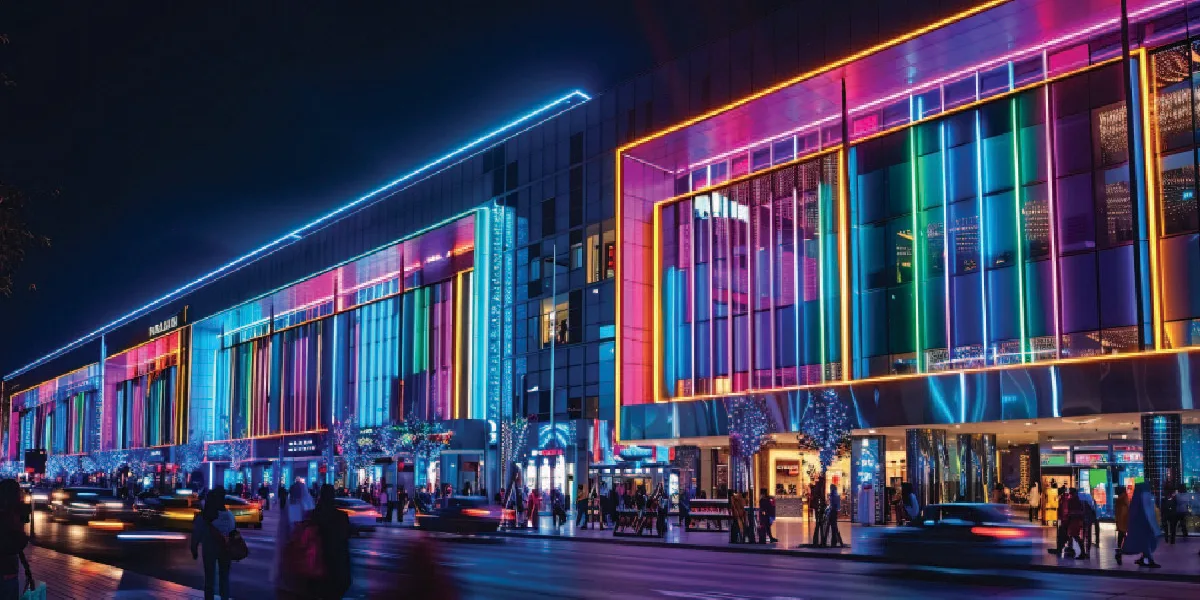
mainly due to their unique advantages in color performance, dynamic control, and artistic interactivity. For example, in venues such as stages, exhibition halls, esports rooms, and art installations that require high-precision dynamic lighting, they can be synchronized with music and sensors to achieve an immersive interactive experience.
- Ultra-high color accuracy and dynamic effects: RGBIC light strips, such as WS2812B/SK9822 chips, support independent addressing of each LED, achieving 16 million color depth (16 bits/channel), far exceeding the 8-bit color depth of traditional RGB light strips. Combined with PWM dimming technology, they can achieve smooth gradients, flowing effects, breathing effects, and other dynamic lighting effects, meeting the extreme demands of art installations for color transitions.
- Precise control and programming: The built-in IC chip allows programming via SPI/UART protocols, supporting control systems such as Arduino and DMX, enabling real-time interaction between lighting, sound, sensors, or audience movements (e.g., music rhythm, touch triggers). For example, the installation can generate dynamic lighting effects using AI algorithms to enhance immersion.
- Flexibility and adaptability: Using a serial cascading architecture, a single light strip can be cascaded up to 100 meters (with signal amplification), making it suitable for large-scale installations.
- Protective performance: IP68 waterproof design (silicone tubing + potting process) enables use in outdoor or humid environments.
Core Technical Features Comparison
Monochrome LED strips (4000K pure white) offer the best cost-effectiveness, with a cost per meter under $1.5, ideal for warehousing and logistics. CCT LED strips provide circadian rhythm lighting from 2700K to 6500K, with a color rendering index (CRI) over 95, suitable for medical and educational settings; RGBW light strips for product lighting, featuring CRI 90 white light plus dynamic colors to attract foot traffic, are suitable for retail stores. RGBIC digital control for flowing colored light, suitable for hotels, clubs, and building media facades.
Core Technical Feature Comparison Table
| Control Type | Color Dimension | Typical Protocol/Chip | Color Rendering Index (CRI) | Energy Efficiency Ratio (W/m) | Minimum Control Unit |
| Monochrome | Fixed Color Temperature | Constant current IC (e.g., PT4115) | ≥90 | 4.8-14.4 | Entire light strip |
| CCT | 2700K-6500K | Dual-channel PWM dimming | ≥90 | 7.2-19.2 | 1-meter segment |
| RGB | 16 million colors | WS2812B/SK6812 | 65-75 | 14.4-28.8 | Single LED |
| RGBW | RGB + pure white light | SK6812RGBW | ≥90 | 18-36 | Single LED |
| RGBIC | Independent addressing | DMX512/ArtNet | Depends on the chip | 24-72 | single pixel point |
Installation Notes
1. Avoid using RGB as the primary lighting source, as RGB colors are not suitable for lighting purposes. Additionally, the color rendering index (CRI) of mixed light is below 70, so it is only suitable for commercial entertainment applications.
2. When the transmission distance is too long, pixel control projects must incorporate data amplifiers. Specific considerations should be based on input voltage and distance.
3. In humid environments, select LED strips with an IP65 rating or higher.
4. RGBIC pixel LED strips have a more complex installation process, requiring pre-installed data cables for pixel control, resulting in a 40% increase in labor costs.
6. Heat dissipation methods: For power consumption less than 14 W/meter, natural convection cooling is sufficient. For power consumption exceeding 24 W/meter, forced air cooling with aluminum channels is required.
Summary
Choosing the right LED strip light is key to achieving the lighting effect you want for your project. Determine the purpose of the lighting—whether it’s for decorative effects, general lighting, or professional use.
Monochrome strip lights are ideal for creating a consistent atmosphere, such as warm or cool white light, and are perfect for task lighting or accent lighting in homes and offices; CCT light strips simulate natural light with a color temperature gradient ranging from 2700K to 6500K, while RGB LED strips offer dynamic color display and the ability to create various lighting effects.
RGBW light strips infuse white light purity into the color palette, and pixel-controlled light strips allow each light point to function as a programmable digital brush, painting the flowing colors of your imagination.
FAQ
A: W – White light; CW – White light and Warm White light; CCT (Correlated Color Temperature) – Cold White (CW) and Warm White; IC – Integrated Circuit.
A: RGBW adds a set of white light to the three RGB colors.
A: While mixing different types of LED light strips is technically possible, different chip types have varying color output and brightness levels, and mixing them may result in uneven effects or inconsistencies. It is recommended to use only one type of LED per installation; if you choose to mix LEDs, ensure they are compatible with your controller and consider their performance differences to maintain consistent lighting.
A: All pixel LED strips can be cut at the solder joints. It is very simple and easy.
A: Higher-voltage LED strips, such as 24V or 48V, can operate over longer distances without voltage drop. By reducing current, they minimize resistance, allowing for consistent brightness over longer runs.
A: Flickering is typically caused by voltage drop or insufficient power supply. Check if your power supply has sufficient power to drive the connected strip and ensure the wiring length is reasonable.

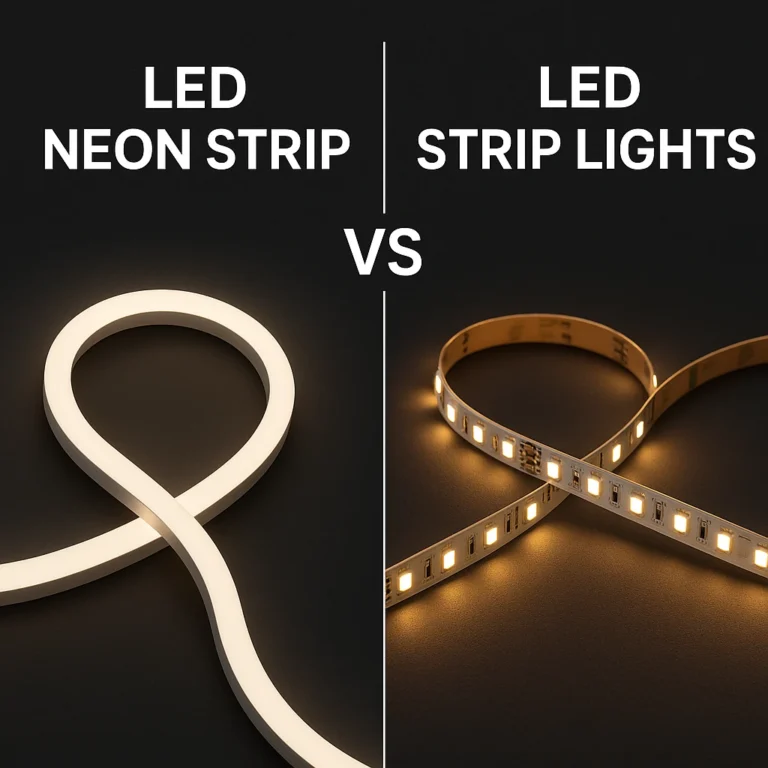
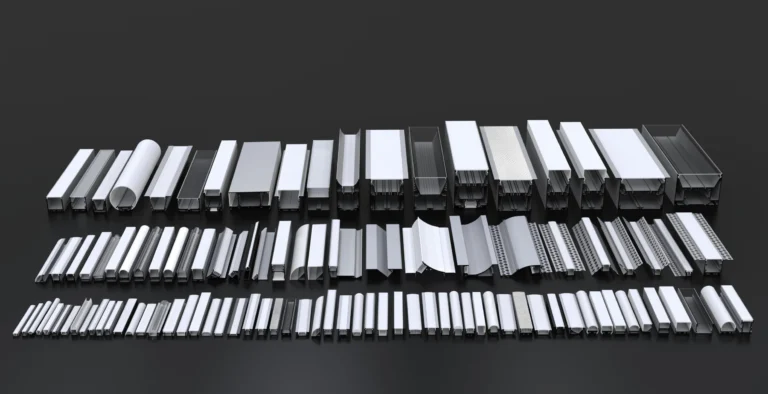
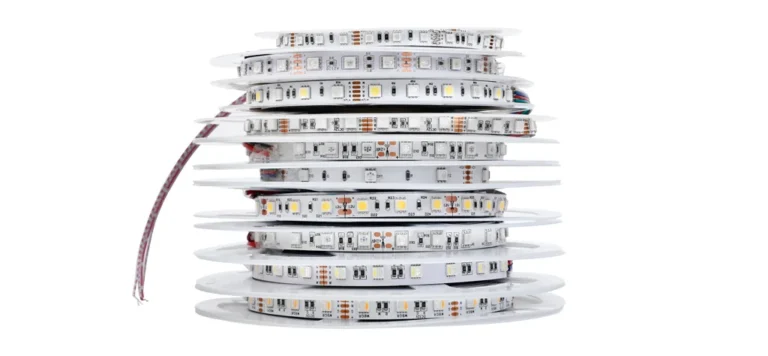
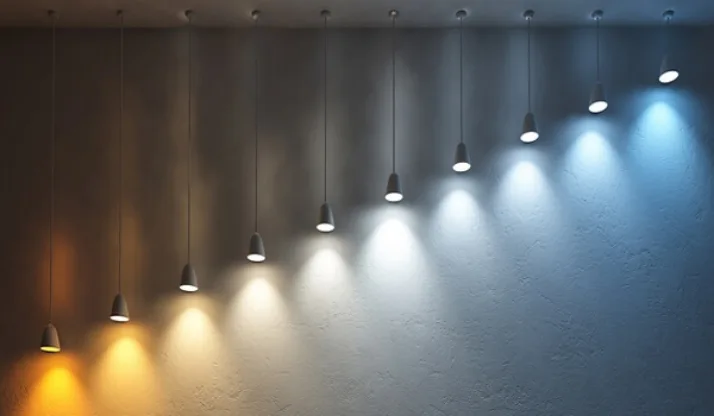
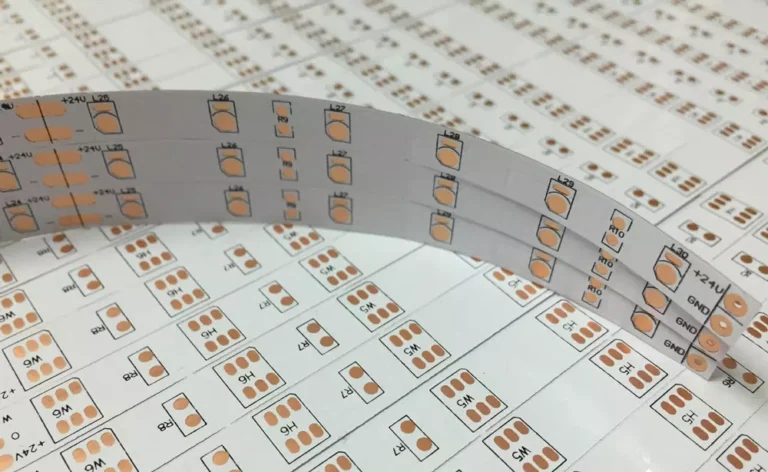

Your writing has a way of resonating with me on a deep level. I appreciate the honesty and authenticity you bring to every post. Thank you for sharing your journey with us.
Usually I do not read article on blogs however I would like to say that this writeup very compelled me to take a look at and do so Your writing taste has been amazed me Thanks quite nice post
Somebody essentially help to make significantly articles Id state This is the first time I frequented your web page and up to now I surprised with the research you made to make this actual post incredible Fantastic job
Your blog is like a beacon of light in the vast expanse of the internet. Your thoughtful analysis and insightful commentary never fail to leave a lasting impression. Thank you for all that you do.